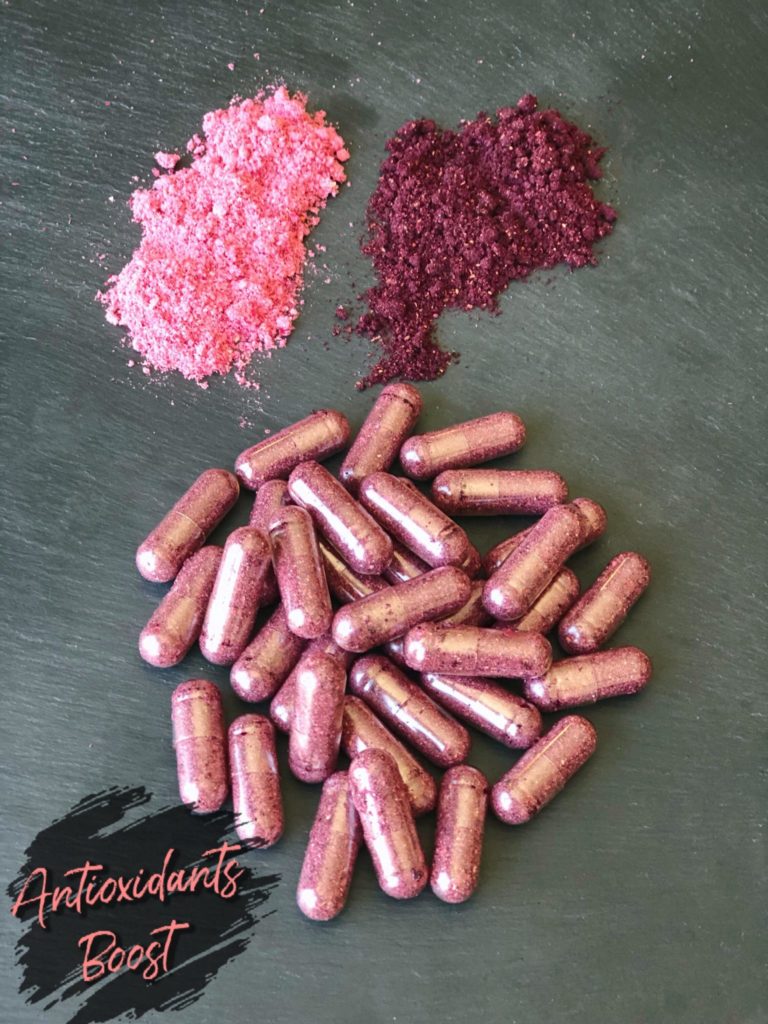What’s So Special About the Cranberry?
Cranberries are a front runner when it comes to antioxidant and urinary tract support. Cranberries are nearly 90% water, which is important to the filtering organs of canines, as well as, to their urinary tract health. Cranberries have a plethora of proven antioxidants in them. Providing antioxidant phytonutrients and other important vitamins & minerals, the cranberry offers Quercetin, Anthocyanins, Benzoic Acid & vitamin E; vitamin C, vitamin B6, vitamin K, vitamin A, potassium, & manganese. Some of the bioactive plant compounds are known to help reduce inflammation and combat some types of bacteria that cause urinary tract infections.
What Dogs Should Not Eat Cranberries & Why
Cranberries do contain simple sugars, so they aren’t a snack to feed daily to an inactive or obese dog.
A diabetic dog wouldn’t be an ideal candidate to consume copious amounts of cranberries either.
Dogs who deal with calcium oxalate stones should refrain from having cranberries added to their bowl because cranberries contain oxalates. Feeding cranberries to a dog who is prone to or suffers from this type of stone may have their condition exacerbated if fed cranberries. There isn’t a proven study that definitively says for certain that is the case, but much of the nutritional data I’ve studied about the cranberry in previous schooling dictates we veer from offering the cranberry to an oxalate stones dog.
What Dogs Should Eat Cranberries & Why
Typical dogs can be offered cranberries for both the antioxidant support discussed above in section one and dogs prone to or suffering from a Urinary Tract Infection (UTI). Cranberries aren’t meant to take the place of antibiotics your Veterinarian may prescribe but they certainly may be fed as a proactive support food or as a holistic approach. Cranberries are loaded with nutrients dogs benefit from.
Raw Facts About the Cranberry–> The skin on a cranberry is where most of the bioactive compounds are so if you were to remove the skin or “juice” the berry, you’d lose these and the fiber benefits as well. Dried cranberries contain the same nutrients as raw cranberries if fed in pure form.
The Awesome Anti’s the Cranberry Brings
According to a study on cranberries & their bioactive constituents, they are a rich source of (poly)phenols, which have been associated with antibacterial, antiviral, antimutagenic, anticarcinogenic, antitumorigenic, antiangiogenic, anti-inflammatory, and antioxidant properties. While this article is focusing on the antioxidants + urinary tract support the cranberry offers, there are also cardiovascular benefits the cranberry is packing. To not take away space dedicated to the topic at hand, I’ll note the study below in the citation section and you can take a read to learn more about the other anti-benefits the study discusses.
Let’s Talk About Blueberries
Blueberries are also made of about 90% water which is beneficial for easy digestion. They are an antioxidant rich superfood which gives support to the immune system. They’re rich in minerals like magnesium & potassium. Containing good amounts of vitamin C, vitamin A, & vitamin K, the blueberry packs a mighty punch. They also give a nice little boost of fiber.
Other Beneficial Facts About the Blueberry
Blueberries contain neutralizing antioxidants that diffuse free radical cell damage. The main antioxidant compounds in blueberries are called flavonoids. One group of flavonoids, the anthocyanins is one of the main attractions to feeding blueberries. You’ll notice blueberries contain a lot of the same benefits as cranberries & this is because they’re closely related foods.
Raw Facts About the Blueberry–> Blueberries contain substances called anti-adhesives which help prevent bacteria like E. coli from binding to the wall of the bladder. They are used as an ingredient in many UTI and bladder support supplements for this reason.
What Dogs Should Eat Blueberries & Why
Blueberries provide many beneficial compounds discussed above and are a good feed for typical dogs and dogs in need of support regarding their urinary tract health. Dogs with oxalate issues may benefit from proactively eating blueberries as they are a low-oxalate food.
What Dogs Should Not Eat Blueberries & Why
There aren’t many downsides to the blueberry when it comes to dogs but generally speaking, they are higher in sugar and so they ought not be fed in excess to an obese dog or a diabetic dog. They are known to cause “the runs” in dog’s with sensitive stomachs so feeding them in moderation to a dog with a temperamental gut is the appropriate approach.
Boosting + Supporting
An easy way to get the antioxidants + urinary tract support into your dog without having to run to the store for fresh berries weekly is to make yourself a real foods supplement. How to make it?
 Antioxidants + Urinary Tract Support Recipe
Antioxidants + Urinary Tract Support Recipe
It takes quite a few berries to make yourself good amount of powder so be sure you go ahead and buy more than you think you need.
Ingredients & Supplies:
Organic Cranberries
Organic Blueberries
Oxygen/Moisture Absorbents
Veggie Caps, Size Depends on Your Dog’s Needs (optional)
Fruit Dryer with Multi-Settings for the Blower
Instructions:
Soak your organic berries in an apple cider vinegar soak, rinse with filtered water after the soak and let air dry for about ten minutes. (2:1 ACV to Water. Your mixture amount will depend on how many berries you’re soaking.)
Arrange your berries on your fruit dryer’s trays, keeping each berry to its own tray. Depending on your fruit dryer, it could be 2-3 days before your fruit is dried fully. Keep checking until they seem dried. Then dry again for another hour or so.
Add each berry by itself to a high-powered unit such as a Vitamix or a Ninja. I use a Vitamix with the dry container for my berries.
Store in glass air-tight containers with an oxygen & moisture absorbent.
How to Feed
I prefer to feed the powders in loose form, but you can put them into veggie capsules as I did for the puppy kits that went home with a recent litter of Lab pups, we had. Putting the powder into veggie caps made it easier for the puppy owners to have the correct amount of powder to feed their pup. As mentioned above, your veggie capsule size will depend on your dog.
Use a 2:1 ratio of cranberries to blueberries. So, if you opt for putting the powders into a capsule, fill them 2:1 cranberry powder to blueberry powder. If you feed loose, then the same rule applies; 2:1 of cranberry powder to blueberry powder.
Feed 240mg per 25 lbs. of dog
Citations: Cranberries and Their Bioactive Constituents Study
AFPA Holistic Nutritionist Course Curriculum
Cranberry Products Inhibit Adherence of P-Fimbriated Escherichia Coli
Dietary supplementation with cranberry concentrate tablets may increase the risk of nephrolithiasis

May I ask why you recommend using a fruit dryer and feeding the berries dried, in powder form? I never heard of that. I was going to buy raspberries, blueberries, cranberries and strawberries for my dogs and puree them as I have always been told. I was leery of the sugar in the berries so was looking at your sit for information, suggestions or ideas.
Also when is your next puppy and adult courses going to be available? I had been patiently waiting a year to enroll in each ????.
One more question. Personal opinion what do you think about pet dogs being skinny. I had been told they are healthy weight. But these dogs I can see every vertebra, rib, hip. Some of them look emaciated. They said raw feeders dogs keep there dogs healthy weight and they were told there dog looks healthy. I know you want the indent at hips, tucked belly, to slightly see a few ribs. I don’t think bones should be predominately protruding. Maybe I just over think things ????????♀️